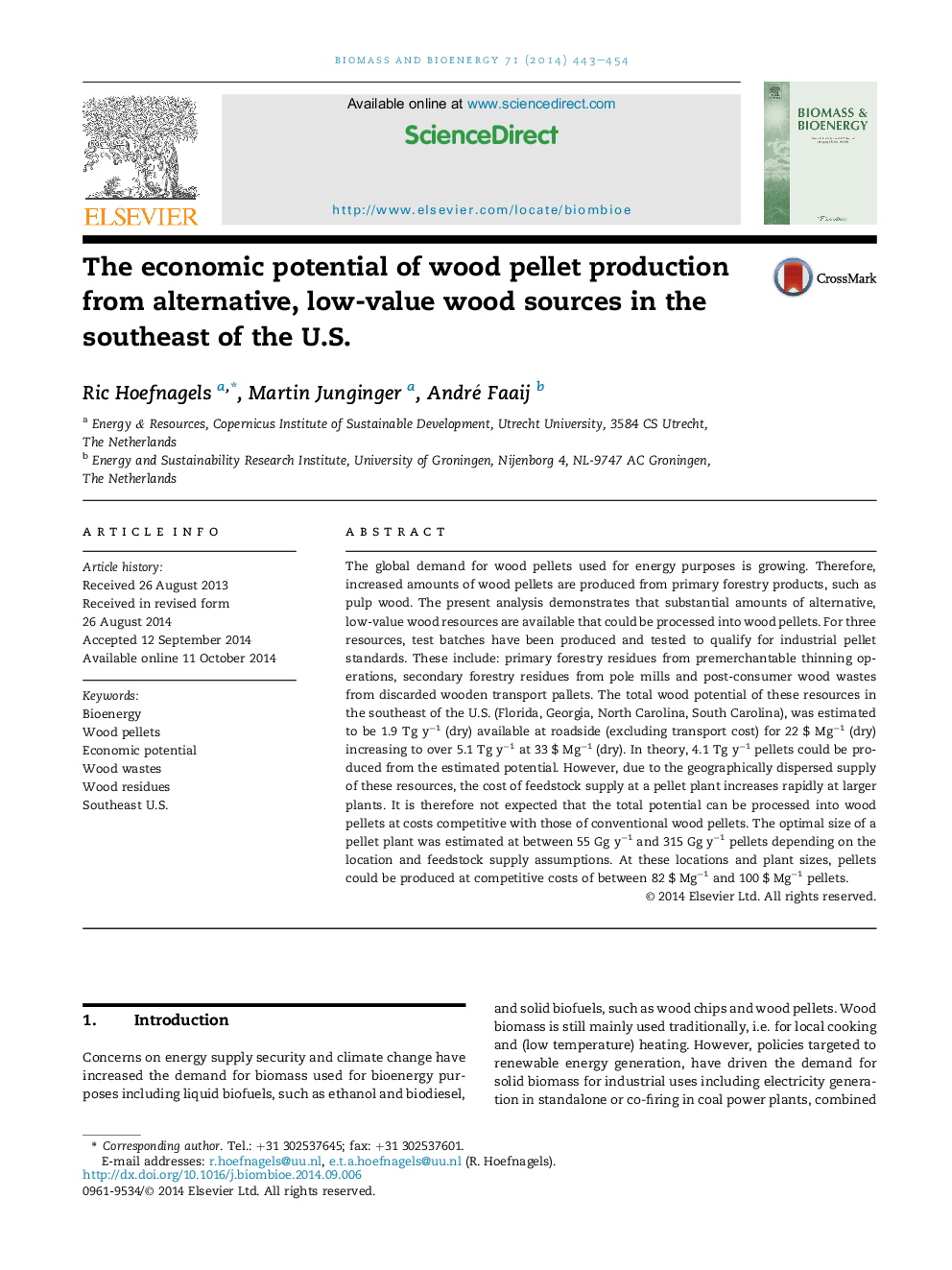| کد مقاله | کد نشریه | سال انتشار | مقاله انگلیسی | نسخه تمام متن |
|---|---|---|---|---|
| 676842 | 1459822 | 2014 | 12 صفحه PDF | دانلود رایگان |
• We analyzed the potential of low-value resources available for wood pellet production in the southeast of the U.S..
• The selected resources include unmerchantable forest residues, pole mill residues and discarded transport pallets.
• Up to 5.1 Tg (dry) wood was estimated to be available, sufficient to produce 4.1 Tg wood pellets.
• Despite the geographic dispersed supply, pellets production cost are estimated to be cost competitive with conventional pellets (82–100 US$2012 Mg−1).
The global demand for wood pellets used for energy purposes is growing. Therefore, increased amounts of wood pellets are produced from primary forestry products, such as pulp wood. The present analysis demonstrates that substantial amounts of alternative, low-value wood resources are available that could be processed into wood pellets. For three resources, test batches have been produced and tested to qualify for industrial pellet standards. These include: primary forestry residues from premerchantable thinning operations, secondary forestry residues from pole mills and post-consumer wood wastes from discarded wooden transport pallets. The total wood potential of these resources in the southeast of the U.S. (Florida, Georgia, North Carolina, South Carolina), was estimated to be 1.9 Tg y−1 (dry) available at roadside (excluding transport cost) for 22 $ Mg−1 (dry) increasing to over 5.1 Tg y−1 at 33 $ Mg−1 (dry). In theory, 4.1 Tg y−1 pellets could be produced from the estimated potential. However, due to the geographically dispersed supply of these resources, the cost of feedstock supply at a pellet plant increases rapidly at larger plants. It is therefore not expected that the total potential can be processed into wood pellets at costs competitive with those of conventional wood pellets. The optimal size of a pellet plant was estimated at between 55 Gg y−1 and 315 Gg y−1 pellets depending on the location and feedstock supply assumptions. At these locations and plant sizes, pellets could be produced at competitive costs of between 82 $ Mg−1 and 100 $ Mg−1 pellets.
Journal: Biomass and Bioenergy - Volume 71, December 2014, Pages 443–454
